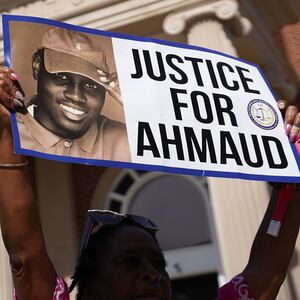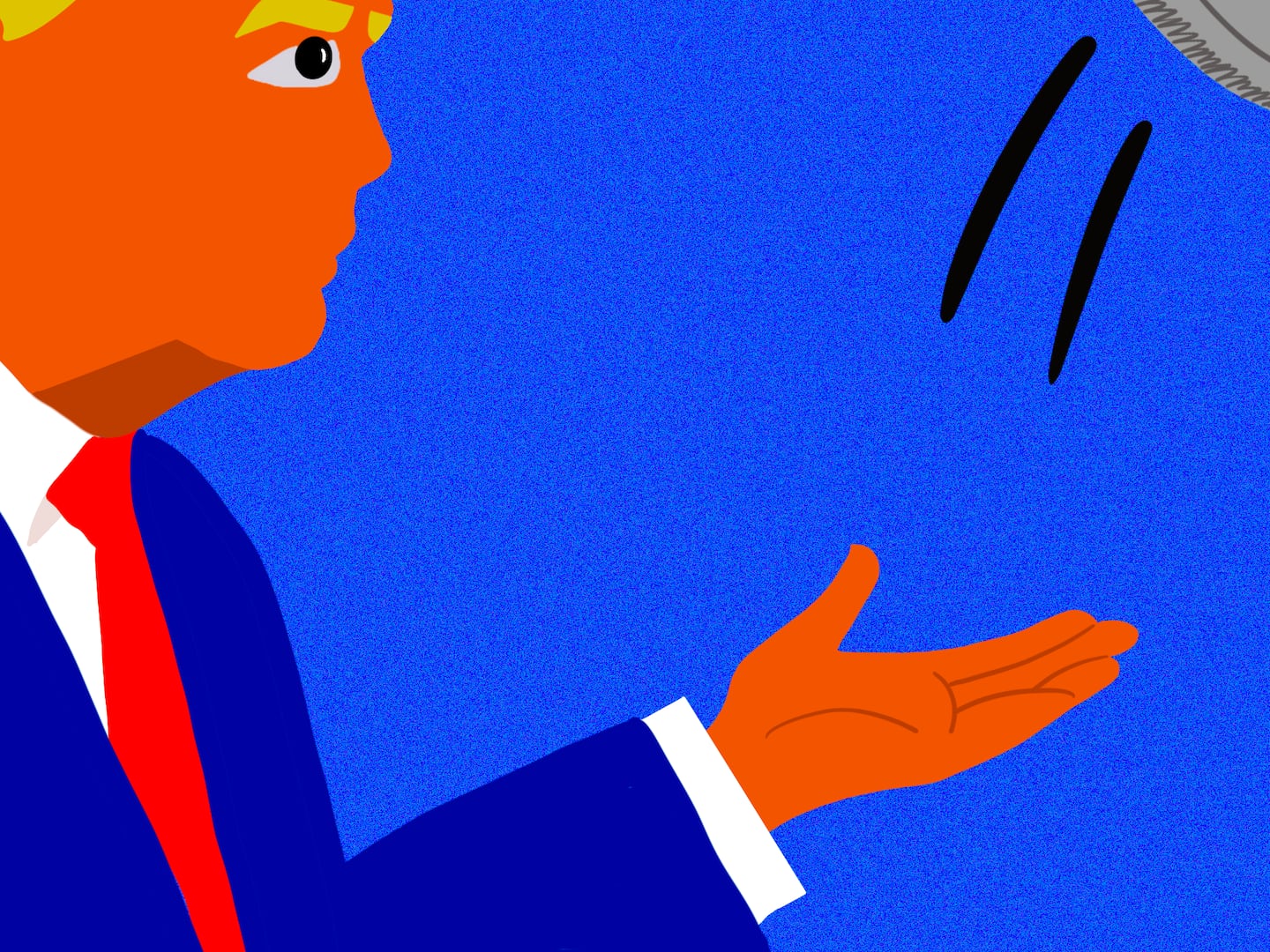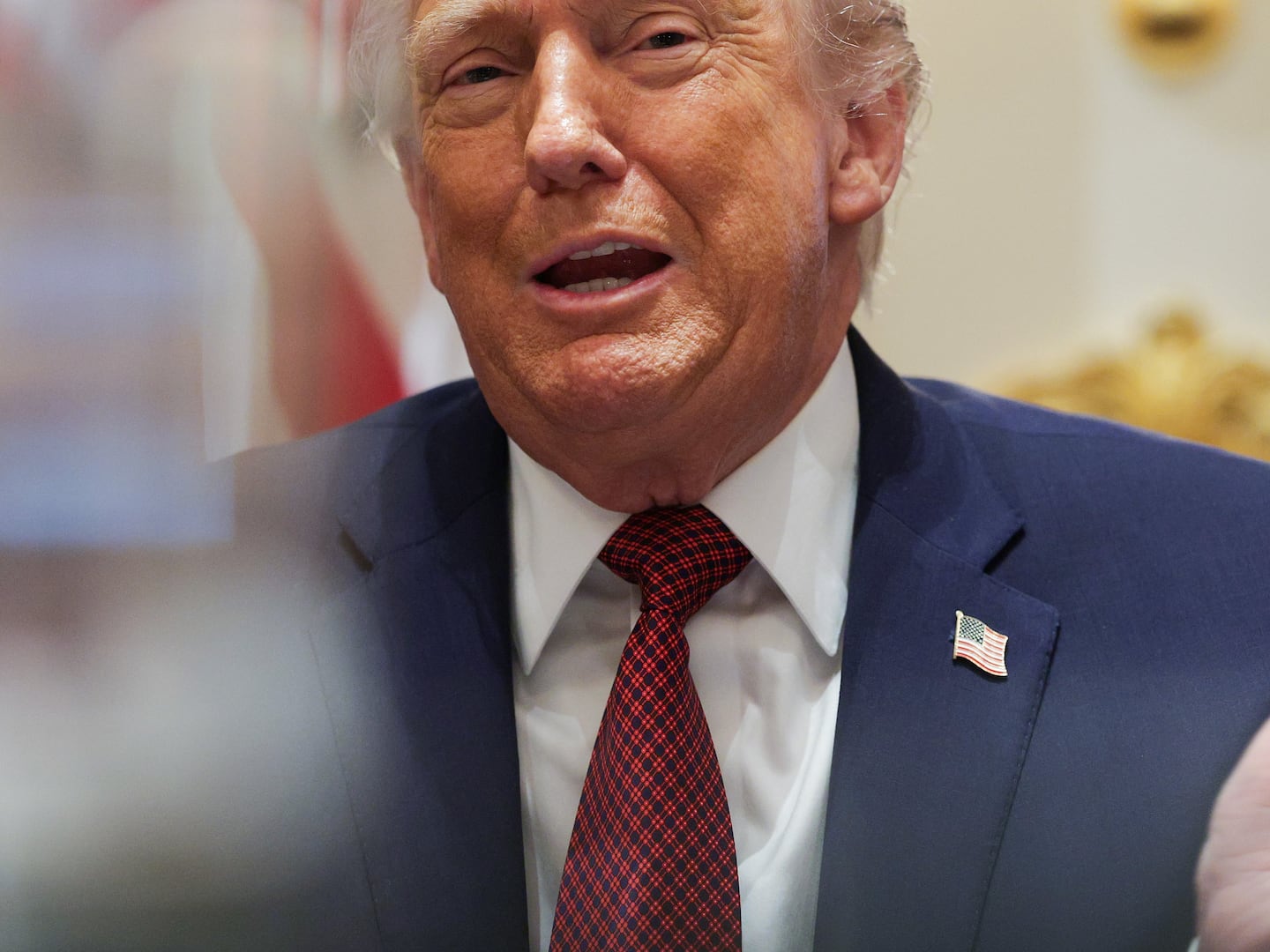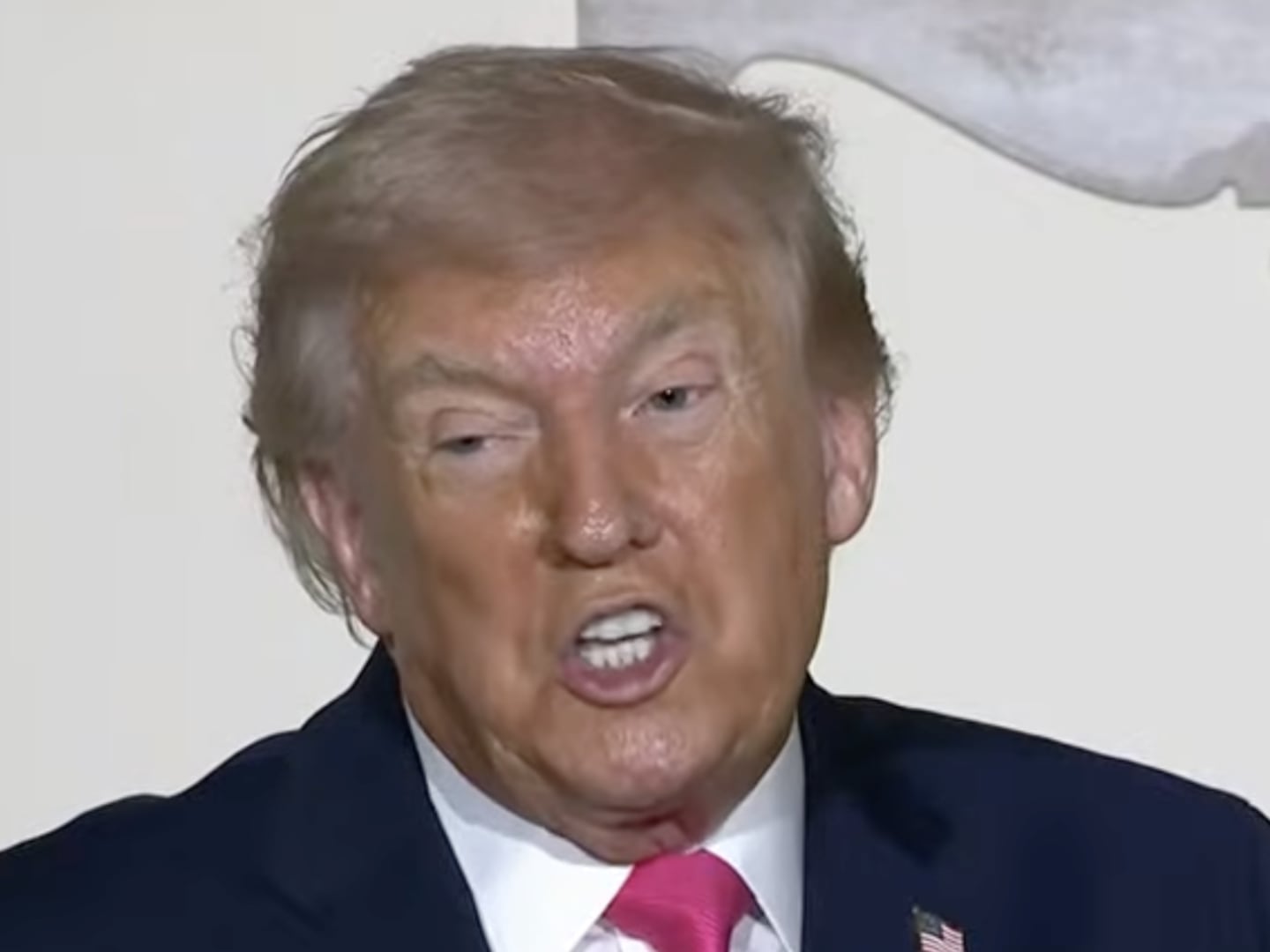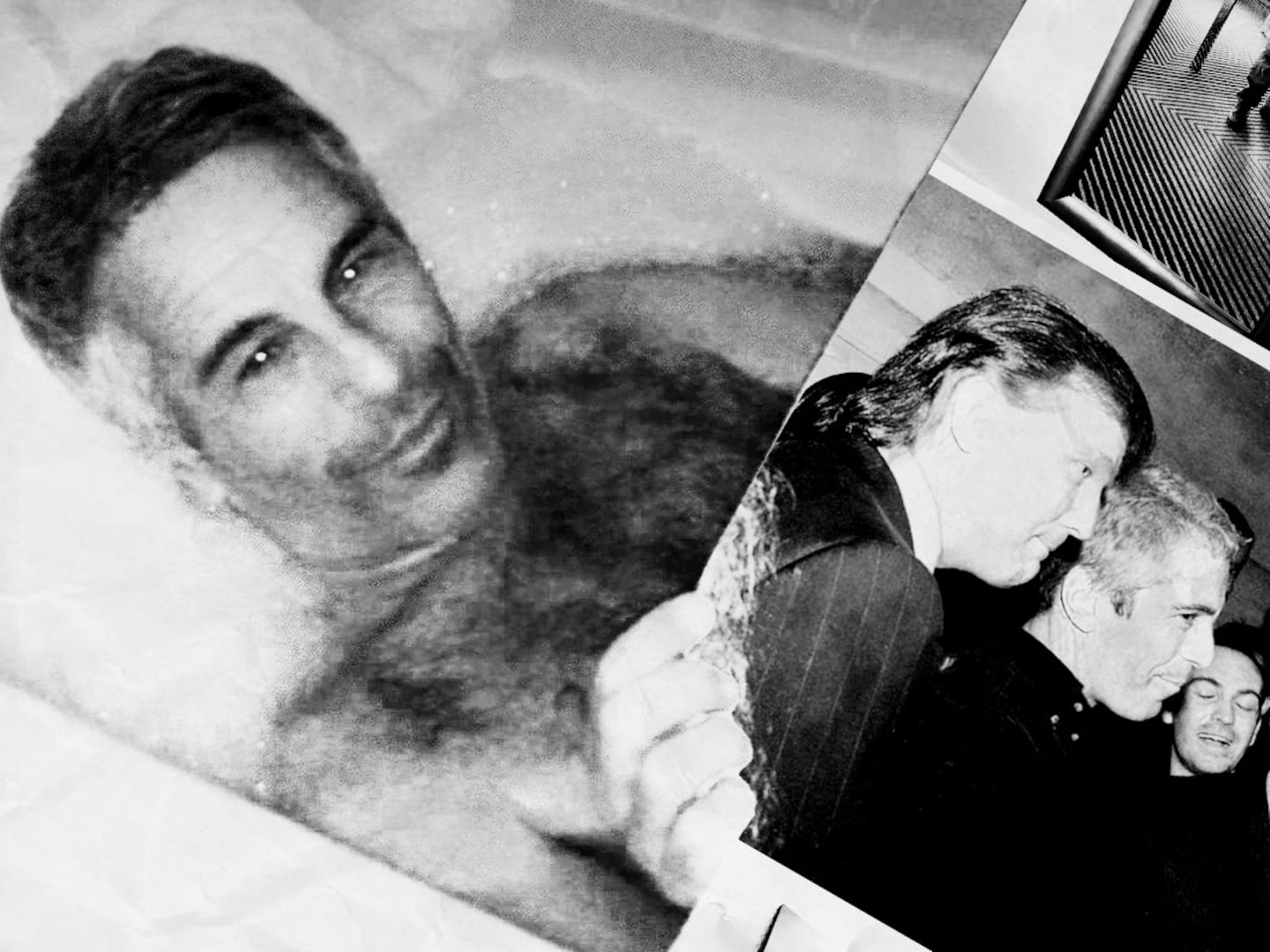Kyle Rittenhouse’s highly anticipated and politically polarizing murder trial began on Monday. And perhaps the biggest question looming over the proceedings—which will inevitably feature caricatures of unhinged racial-justice activists and harrowing stories of loved ones lost to a rogue gunman—is what the teenager himself might say to jurors deciding his fate.
Rittenhouse, 18, is accused of murdering two people and injuring a third on Aug. 25, 2020, amid unrest in Kenosha, Wisconsin, after the police shooting of Jacob Blake. Prosecutors allege that the then-17-year-old traveled from Illinois to the Wisconsin city—armed with an AR-15—to co-mingle with other armed vigilantes styling themselves guardians of local businesses against protesters enraged by video of a Black father being shot in front of his kids.
During the protest, which defied a citywide curfew, Rittenhouse was caught on camera clashing with activists near a car dealership, where he fatally shot 36-year-old Joseph Rosenbaum. The incident spurred others at the scene to pursue the teenager and grab his gun in a scuffle that ended with Rittenhouse fatally shooting 26-year-old Anthony Huber and wounding Gaige Grosskreutz, now 27.
Since Rittenhouse’s arrest, when he was hit with several charges including first-degree homicide, conservatives have rallied behind the teenager and his cause has emerged as a testament to the ever-more-bitter divides over gun rights and racial inequality in America.
“He is a darling of the far right,” Keith A. Findley, a law professor at the University of Wisconsin, told The Daily Beast on Monday, calling the case a “powder keg.”
“Unlike any other criminal defendant, [Rittenhouse] already has massive financial and political support, and he comes far more equipped because the right has poured funds into his defense,” Findley added.
The government will try to convince 12 jurors that Rittenhouse is a “teenage vigilante” who illegally traveled with a military-style semi-automatic rifle and murdered three people, while his defense team is preparing to argue that their client only fired out of self-defense.
But to prove that he sincerely feared for his life, several legal experts canvassed by The Daily Beast suggested, Rittenhouse may need to testify in his own defense. The only problem is that putting any teen on the stand in his own murder trial is risky at best.

“It is hard to establish Kyle believed he had no choice but to use self-defense without him testifying,” Paul Bucher, a former district attorney in Waukesha County, Wisconsin, and a one-time state attorney general candidate, told The Daily Beast. “Then again, having Kyle testify opens a huge door for the prosecution.”
Rittenhouse’s defense team did not respond to a request for comment for this story.
To prove self-defense in Wisconsin, his attorneys must show that Rittenhouse had no choice but to use deadly force “to prevent imminent death or great bodily harm to himself.” Bucher noted that in order to do so, jurors will need to put the case through a two-rule test: that Rittenhouse really believed he was in peril and that he had to use self-defense, and that the teenager’s actions were objectively reasonable for that situation.
Notably, state law does not dictate a resident has a “duty to retreat” before using force. Which is to say prosecutors will have to prove Rittenhouse’s actions were unreasonable, not that he might have fled to avoid conflict.
“Jurors will have to determine whether any reasonable person, in that time and in that place, would do what Kyle did that night,” added Bucher, noting that, unlike most murder trials, this case is not about who committed the violence, but rather the intent behind it.
“The circumstances of what happened are undisputed—it’s on video,” the former district attorney said. “So this defense hinges on the jury believing that Kyle was terrified for his life that day. What better way to prove that than to have him tell them himself?”
But video footage of the incident does not paint the clearest picture. At the time of the altercation, the Wisconsin city had endured two nights of tense altercations between police in tactical gear and residents and activists who were protesting Blake’s ultimately nonfatal shooting (it paralyzed him from the waist down). The city was also a microcosm of a national racial reckoning spurred by a plague of police violence, including the murder of George Floyd caught on camera.
On the third night of protests, authorities say, Rittenhouse arrived in Kenosha from Antioch, Illinois, armed and determined to protect local businesses allegedly in need of his aid. The situation was already a volatile one: In one Daily Caller video from that night, the armed Rittenhouse stated it was his “job” to guard a boarded-up business—though he did not say if he was asked by anyone to do so.
“So people are getting injured and our job is to protect this business,” Rittenhouse said in the video, after being asked what he’s doing at the protest. “And part of my job is to also help people. If there is somebody hurt, I’m running into harm’s way. That’s why I have my rifle, because I need to protect myself, obviously. I also have my med kit.”

Kyle Rittenhouse in Kenosha, Wisconsin, on the night of Aug. 25, 2020
Tayfun Coskun/Anadolu Agency/GettyLater, after the citywide curfew went into effect, Rittenhouse is seen in video near a car dealership—armed with the AR-15—when he began to clash with a crowd, including Rosenbaum. During the scuffle, Rittenhouse shot Rosenbaum after the unarmed man tossed a plastic bag.
“This wasn’t him taking potshots at looters,” Corey Chirafisi, a lawyer for Mr. Rittenhouse, said in a pre-trial hearing. “Mr. Rosenbaum was chasing him. That started the whole thing.” In an interview with the Washington Post, however, Rosenbaum’s fiancée said the father-of-one was not part of the protest—though she did not know why he was in the area that night.
As Rittenhouse ran away from the scene, still holding his rifle, a criminal complaint states he told someone on the phone: “I just killed somebody.” Soon after, Rittenhouse is seen in another video running down the street with several protesters in pursuit. Among them is Huber, who appeared to hit Rittenhouse in the head with his skateboard and also reach for the gun after the teen murder suspect stumbled to the ground.
Rittenhouse fired a shot and struck Huber in the chest before Grosskreutz stepped toward the teenager. A criminal complaint states that Rittenhouse then fired a second shot that hit Grosskreutz’s arm before he got up from the ground and fled the scene. Video shows Rittenhouse walking toward officers with his hands up in an apparent surrender—but officers just walked by, a notorious episode that fueled cries of disparate treatment of white people by police.
“The defendant came to our community,” Assistant District Attorney Thomas Binger said in a pre-trial hearing. “He’s not a resident, he’s underage, he’s out after curfew, he’s armed with an illegal weapon. Why? That is the question.”
For John Gross, a clinical associate professor and the director of the Public Defender Project at the University of Wisconsin-Madison Law School, one way to combat the prosecution’s portrayal of Rittenhouse is to have the teenager speak for himself.
“The defense might put him on the stand to have him explain to jurors why he went there that day. Coming from him, it could be very powerful,” Gross told The Daily Beast. “If I were his defense attorney, I would have been preparing my client to testify. I would have as an initial plan to have him testify and explain himself. To prove that this is a kid that made a bad decision and that he knows that now.”
The law professor argued that if Rittenhouse were to testify, having him take responsibility for his actions—and that he did illegally have a gun—would only bolster his credibility and the case that he was a scared teenager who acted out of fear. According to Wisconsin state law, minors are not allowed to possess firearms or even carry them in public, with some hunting exceptions.

The remains of cars burned during the previous day's protest are seen in Kenosha, Wisconsin on August 24, 2020.
KAMIL KRZACZYNSKI/AFP via Getty Images“Would I be concerned about his age, his maturity level, his ability to withstand cross-examination? Yes, I would be,” Gross said. “But if the defense is doing their job, they prepared him for this. He should be prepared as a witness and the lines of questioning from prosecutors.”
Bucher agreed that giving prosecutors an opportunity “to question Kyle directly during cross-examination is a huge risk,” especially since they might ask him why he went to Kenosha in the first place.
As the Daily Beast previously reported, Rittenhouse’s social-media accounts at the time of the incident were rife with support for pro-police causes and he displayed a fervent affinity for guns. Buzzfeed News first reported that Rittenhouse posted a TikTok video from a Jan. 2020 Trump rally in Des Moines, Iowa—where he sat in the first row. And in previous court filings, prosecutors have said Rittenhouse fraternized with the Proud Boys after his arrest and even posed for photos while flashing a “white power” sign.
While it is not yet clear what prosecutors will be able to share with jurors about Rittenhouse’s far-right ties, the judge has already indicated it won’t be a very detailed picture. Still, if Rittenhouse takes the stand, and prosecutors question him strategically, his politics may be exposed.
In fact, on Tuesday, defense attorney Mark Richards suggested in opening statements that Rittenhouse will testify in his own defense. But according to Gross, it would be unwise for the defense to announce their plan without seeing the strength of the prosecution’s case.
Also: The teenager could change his mind about testifying at the last minute.
“At the end of the day, the decision to testify is up to Kyle,” Gross said. “‘It could be a game-time decision not to take the stand.”
Findley, however, does not believe Rittenhouse needs to testify in order to make a strong self-defense case. While the law professor believes “that would be useful to explain what he was subjectively fearing,” that same point can be proven with witness testimony, videos from the incident, and insight from his friends or family that may speak to jurors.
“To avoid a conviction, he just needs one juror to vote with him,” Findley said. “I don’t know if you need him on the stand to get that one juror.”
More than anything else, Rittenhouse testifying could—if done effectively—serve to humanize a murder suspect who has come to represent, for many Americans, one of the most disturbing episodes of racially-infused violence in a nightmare year defined by it.
“Putting him on the stand helps undercut the politicization of the case, because when you put an 18-year-old on the stand, jurors will be reminded that this case is about him,” Gross said. “Not BLM, or gun rights, or the right to protest.”


